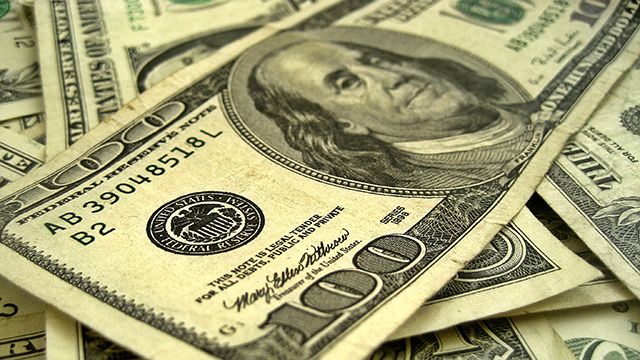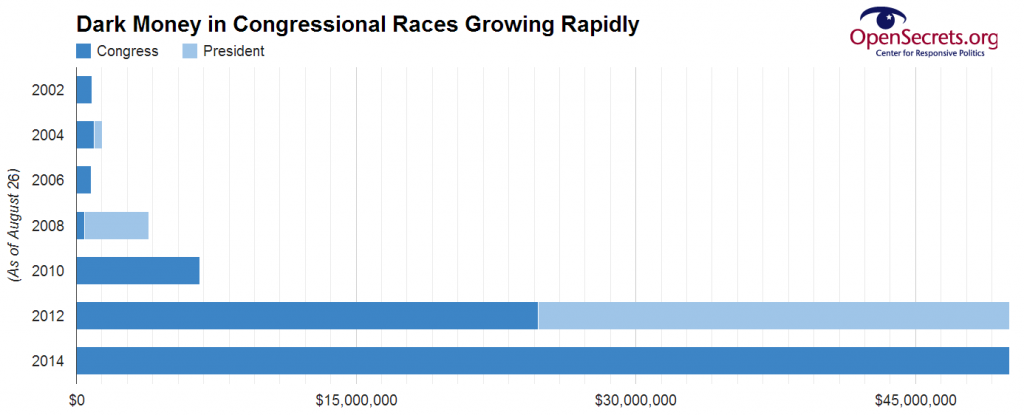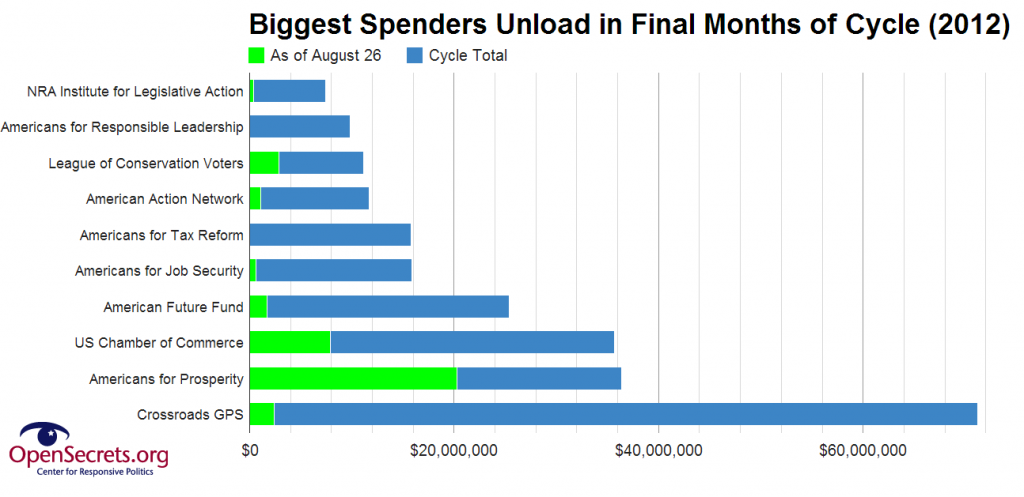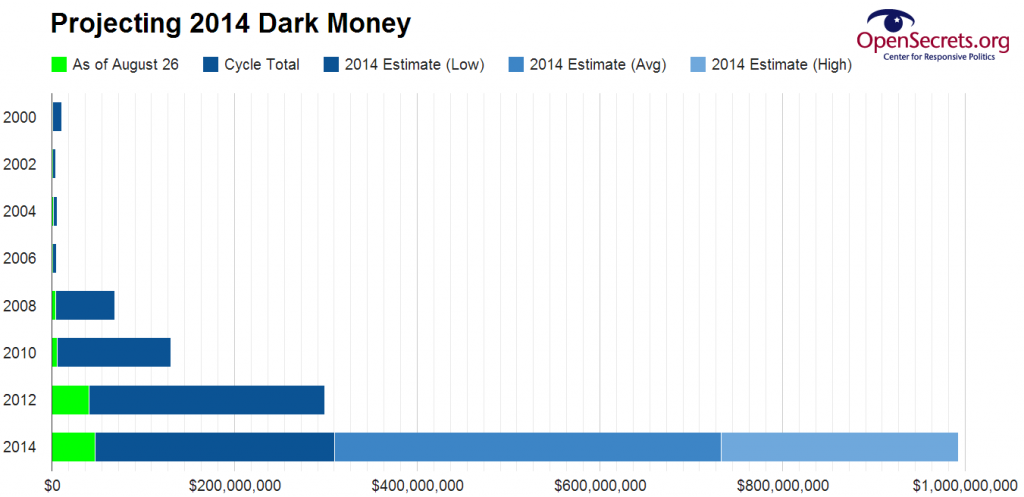
This post first appeared at Center for Responsive Politics.
Rep. Tom Cotton (R-AR) is a dangerous man and a hypocrite. Cotton — who is running to unseat Sen. Mark Pryor – wants to “end Medicare as we know it” while also treating himself and his friends in Congress to “taxpayer-funded health care for life.” At least, that’s what a liberal group called Patriot Majority USA wants you to believe, especially if you plan on voting in the Arkansas Senate race in November.
Neither of the claims is true, and weren’t in 2012 when Patriot Majority first trotted them out. Yet, while the group is generous with questionable facts, mum’s the word when it comes to who, or what, is the source of the $7 million it has spent on political ads so far this cycle. As a 501(c)(4) social welfare organization that isn’t supposed to have politics as its primary purpose, it isn’t required to disclose its donors.
Political spending by these groups is reaching new heights: This week, it crested $50 million, a record for this point in an election cycle, and more than seven times beyond the outlays by such groups at this time in the last midterms. And that’s just the amount that has been reported to the Federal Election Commission, which doesn’t include tens of millions more spent on “issue ads” that aired earlier in the cycle and didn’t have to be reported to the agency. It’s another reminder that the current cycle is shaping up to be the darkest election in a long time.

Spending by organizations that don’t disclose their donors is ahead of all other cycles, even the last presidential cycle.
Lying in the name of “educating voters” isn’t new, and Patriot Majority isn’t the only dark money group doing it, not even in Arkansas. Another 501(c)(4), Americans for Prosperity — which is backed by the billionaire industrialists Charles and David Koch’s conservative donor network — also seeks to “educate US citizens.” Ads by the group, which had raised more than $115 million at the time of its last report, contain glaring mistakes, according to independent fact checkers.
Unlike Patriot Majority, though, Americans for Prosperity has reported almost none of its spending on ads in Senate races around the country to the FEC. That’s because they highlighted issues like health care and the economy — albeit in connection with embattled Senate Democrats — rather than calling directly for the election or defeat of a candidate, and they didn’t air within specific pre-primary and pre-general election time periods.
The rules that allow 501(c) organizations to make ads like this are meant to allow issue-oriented nonprofits to put pressure on elected officials to adopt a certain policy position or to educate the public about the need for a particular course of action. Increasingly, though, the groups running ads like this are using the rules as cover for a clearly political agenda. The way it works: Well-funded nonprofits run ads outside the reporting window – often making false or misleading claims about a candidate. Then, months later, they run ads advocating openly for the candidate’s defeat, often recycling the same false or misleading claims.
In August 2012, for example, a 501(c)(4) called American Future Fund falsely claimed that Rep. Martin Heinrich (D-NM) “spent a trillion of our tax dollars on a stimulus for failed companies here and jobs overseas” and asked for viewers to “tell Martin Heinrich to stop the wasteful spending that’s hurting our economy.” Then, days before the election, AFF ran an ad with the same false claim, this time calling for Heinrich to be voted out. The first ad didn’t have to be reported. The second one did.
For months, we’ve mostly been seeing the first side of that equation play out in the midterms. But come September, the spending will have to be reported to the FEC, and like clockwork, many of these groups will start openly advocating for and against candidates.
In other words, despite already being at record highs, the vast majority of the dark money spending that will be reported to the FEC in 2014 is yet to come. To put it in perspective, at this point in the last midterms, only $6.6 million had been reported by groups that don’t disclose their donors; by Election Day, that total was more than $130 million. At this point in 2012, the reporting window for presidential elections had already been open for about a month, and total dark money had just topped $50 million (though still a hair less than this cycle: $51.1 million versus $51.3 million). By Election Day, that total was more than $300 million.

The groups that would go on to report the most spending in 2012 had yet to report much at this point in the cycle.
At the current rate, the Center for Responsive Politics projects that dark money spending in the 2014 midterms will easily match or surpass the spending records set in the last presidential elections. If the rate of spending from previous cycles continues, the totals could reach upwards of $730 million or — if the rate seen in the last midterm holds — edge close to $1 billion.

Based on spending in previous cycles, 2014 dark money is projected to set a new record.
There are no signs of slowing either. Patriot Majority, for one, has already reported as much spending in 2014 — $7 million — as it spent in the whole 2012 presidential cycle, and liberal dark money groups as a whole have spent much more so far this cycle, $14.2 million, than they spent in the entire 2009-10 midterm elections, $10.3 million.
And despite the boom in liberal spending, these groups still don’t compare to their conservative counterparts. Groups on the right have reported spending more than $33 million dollars, and that doesn’t include the months of unreported spending by groups making issue ads in states with tight races.
Organizations in the Koch network in particular have been spending far more than they did in previous cycles. The $35 million that Americans for Prosperity had already reportedly spent by April of this year dwarfs the estimated $18.2 million it had spent by early August of 2012. AFP says it plans to spend $125 million in 2014 — a more than $10 million increase over its overall expenditures in 2012 and nearly $100 million over its 2010 outlays.
Other groups within the Koch network like Freedom Partners and Libre Initiative – both of which claim educating or informing the public as a part of their mission — have begun running ads for the first time, making similarly dubious claims.
Voters around the country should brace themselves for a flood of spending in the coming months, but don’t expect the donors behind it to lay claim to the often deceptive political speech they enabled.


